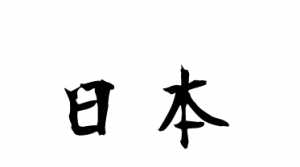25,281 total views, 5 views today

Japanese questions frequently asked in interviews
A Japanese interview with a Japanese company is something to be expected if you are a Japanese learner. Interviews in your mother tongue are hard enough, let alone in Japanese…
That’s why in this article, LearnJapanesedaily will introduce you to Japanese questions frequently asked in interviews with Japanese companies.
you might be also interested in: Interviews with Japanese companies – 7 gestures to avoid
1. Tell me about yourself
The very first question you are going to be asked in any interview: Tell me about yourself!
“Jikoshoukai wo onegai shimasu” (自己紹介をお願いします/じこしょうかいをおねがいします)
The keywords of this question are 自己紹介 jikoshoukai. Sometimes you might not be able to hear every words clearly, but if you get these keywords, it normally means the interviewer is asking you to introduce yourself.
To not be confused when being interviewed, prepare a brief introduction beforehand and practise it on your own or with a friend over and over again. The introduction should be something about you that is related to the job such as: Name (again), age, academic background (very important to people being interviewed for the first time), work experience… Keep the words formal and polite.
2. What do you know about us?
This question is also asked very frequently, especially in interviews for the higher positons in the company, or highly skilled candidates. They might ask:
“(Name of the company) ni tsuite nani wo shitte imasu ka?” (Name of the company について何を知っていますか/についてなにをしっていますか).
What do you know about our company (name of the company)?
Or they can go further with questions about their products:
“Name of the company ga dono youna seihin wo tsukutteiru ka, donna seihin ni tsukawareteiru ka gozonji desu ka?” name of the company がどの様な製品を作っているか、どんな製品に使われているかご存知ですか/name of the company がどのようなせいひんをつくっているか、どんなせいひんにつかわれているか ごぞんじですか).
To be ready for this question, develop a habit of doing research about the company through their websites… If you can’t find the information, be honest and let them know. But at least, give it a try, this shows your concern with the company and the job itself.
3. Why did you apply for this position?
This question is asked a lot in interviews with Japanese company, the question might be:
“oubodouki wo oshiete kudasai” (応募動機を教えて下さい/おうぼどうきをおしえてください).
Instead of using 応募動機, the interviewer may ask :
“shiboudouki, oubo shita riyuu,” (志望動機、応募した理由 / しぼうどうき、おうぼしたりゆう),
“ouboshita kikkake” (応募したきっかけ / おうぼしたきっかけ)
or “shibouriyuu” (志望理由 / しぼうりゆう)
Prepare your answers ahead of time if you don’t want to look and sound disoriented.
Focus on the reasons on how you would suit the position the best, or just simple as how you have always wanted to work in a Japanese company, or how you like their products and want to take part in the production…
Of course you should also prepare answers to questions that interviewers might have asked when they hear your answers!
4. Others
Besides all the questions mentioned above, you might also receive such questions:
Why would you want to change your job/ why did you quit?
“ima no shigoto wo kaetai riyuu ha nan desu ka” (今の仕事を替えたい理由は何ですか/いまのしごとをかえたいりゆうはなんですか).
Tell me about your current job?
“genzai no shigoto naiyou wo oshiete kudasai” (現在の仕事内容を教えて下さい/げんざいのしごとないようをおしえてください).
This is a chance for you to show the interviewers your work experience and knowledge that you have garnered from this job.
Tell me about your sales experience!
“ima made okonatta seerusu katsudou ni tsuite oshiete kudasai“(今まで行ったセールス活動について教えて下さい/いままでおこなったせーるすかつどうについておしえてください).
How do you deal with pressure/stress at work?
“puresshaa ni dou taiou shimasu ka, puresshaa ni taisho suru houhou wo oshiete kudasai.” (プレッシャーにどう対応しますか。プレッシャーに対処する方法を教えて下さい/ぷれっしゃーにどうたいおうしますか。ぷれっしゃーにたいしょするほうほうをおしえてください).
Strengths – Weaknesses
長 所と短所を教えてください。Chousho to tanshowo oshiete kudasai. This question is asked a lot in Japanese interviews. You should prepare for it.
Above are Japanese questions frequently asked in interviews with Japanese companies. Go to the interview all prepared! What is better than having all the answers to to every questions?
Be confident and ace your interview!


